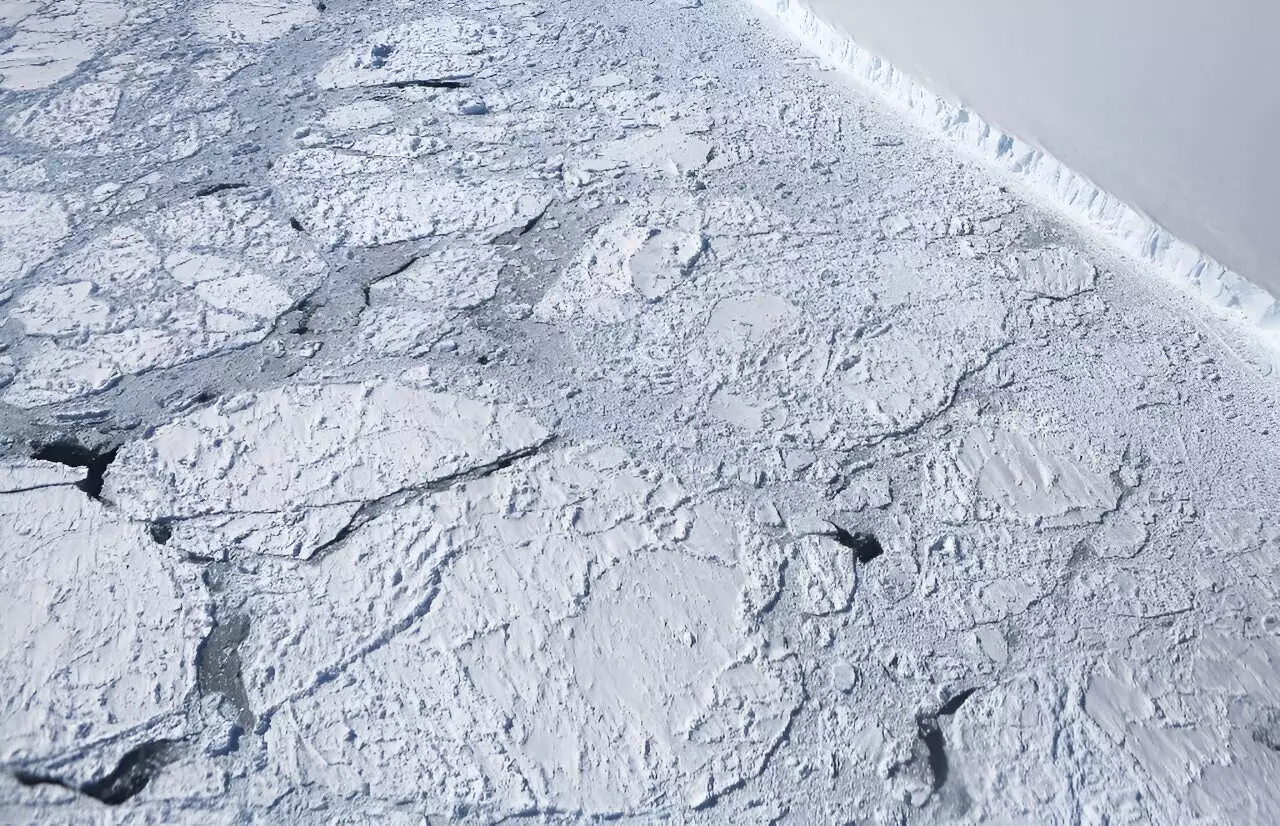The sea ice around Antarctica has experienced an alarming decline, with a record low surface area observed during its maximum size this winter. A preliminary analysis of satellite data conducted by the US National Snow and Ice Data Center (NSIDC) indicates that Antarctic sea ice only reached a maximum size of 16.96 million square kilometers (6.55 million square miles) on September 10, 2023. This measurement, taken as the southern hemisphere transitions into spring, is significantly lower than previous records and highlights a concerning trend in the region.
The NSIDC, a government-supported program at the University of Colorado at Boulder, states that this year’s maximum Antarctic sea ice extent is the lowest in the recorded history from 1979 to 2023 by a wide margin. Moreover, during its peak, the sea ice was 1.03 million square kilometers smaller than the previous record, approximately the combined size of Texas and California. This dramatic decrease in sea ice is a cause for serious concern and demands further examination.
NSIDC scientist Walt Meier notes that the growth in sea ice appeared to be low around nearly the entire continent, rather than concentrated in a specific region. This observation suggests that the decline in sea ice is not localized, but affects the entire Antarctic region. Previous studies had indicated that the sea ice pack in Antarctica remained stable for several decades, with some even observing a slight expansion. However, since August 2016, there has been a sharp downturn in Antarctic sea ice extent across almost all months, indicating a significant departure from historical trends.
While there is ongoing debate among scientists regarding the precise cause of this unprecedented shift in Antarctic sea ice, many believe it to be connected to global warming. Climate models have struggled to accurately predict changes in the Antarctic ice pack in the past, making it challenging to establish a definitive link. Nonetheless, the NSIDC suggests that the downward trend in sea ice extent is likely associated with warming in the uppermost layer of the ocean. With oceans warming globally, there is growing concern that this decline could be the beginning of a long-term trend, with potentially devastating consequences for the region and the world.
Although the immediate impact of melting pack ice on sea levels is minimal, as it forms by freezing saltwater already present in the ocean, the loss of sea ice has significant implications for global warming. The reflective properties of the white ice play a crucial role in regulating the Earth’s temperature by reflecting more of the Sun’s rays compared to darker ocean water. Therefore, the reduction in sea ice exacerbates the effects of global warming. Additionally, the loss of pack ice exposes Antarctica’s coastline to increased wave action, posing a threat to the stability of the freshwater ice cap and coastal habitats. Should land ice start melting, it would lead to a catastrophic rise in sea levels.
Nevertheless, the NSIDC suggests that there is a possibility that waves impacting the ice sheet may contribute to increased accumulation near the coast, offsetting some of the risks associated with rising sea levels. This finding highlights the complex nature of the impact of melting sea ice and underscores the need for further research and monitoring of the dynamics occurring in Antarctica.
The record low winter maximum size of Antarctic sea ice is a concerning development with potential global consequences. This unprecedented decline demands immediate attention from the scientific community and policymakers. Understanding the causes and implications of diminishing sea ice is crucial for developing effective strategies to mitigate the impacts of climate change and ensure the long-term stability of Antarctica and the planet as a whole.


Leave a Reply